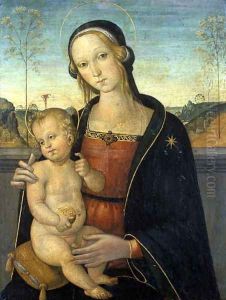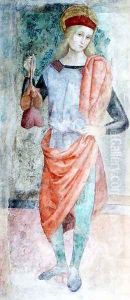d'Assisi, Tiberio Paintings
Tiberio d'Assisi, born around 1573 in Assisi, Italy, was an Italian painter during the late Renaissance period. He is often confused with Tiberio di Diotallevi, also known as Tiberio d'Assisi, who was active during the earlier 16th century. However, the Tiberio d'Assisi referred to here was active in the late 16th and early 17th centuries and should not be conflated with the earlier artist of the same name.
Little is known about Tiberio d'Assisi's training or early work, but it is clear that he was influenced by the Mannerist style, which was characterized by artificiality, grace, and elegance as a reaction against the perfection and harmonious ideals of the High Renaissance. His works display a command of the Mannerist language of form and composition, featuring elongated figures and often complex poses.
D'Assisi's body of work includes religious commissions for various churches and patrons in Umbria, the region where he was born and where he worked for most of his life. He painted altarpieces, frescoes, and other devotional works that were typical for the period. Unfortunately, the details of his career are somewhat obscure, and many of his works have been either lost or damaged over time, which has made it difficult to fully assess his impact on Italian art.
Tiberio d'Assisi's death is recorded in 1644, and although he may not be as widely recognized as some of his contemporaries, his contributions to the art of the late Renaissance in Umbria contribute to the rich tapestry of Italian art history.

